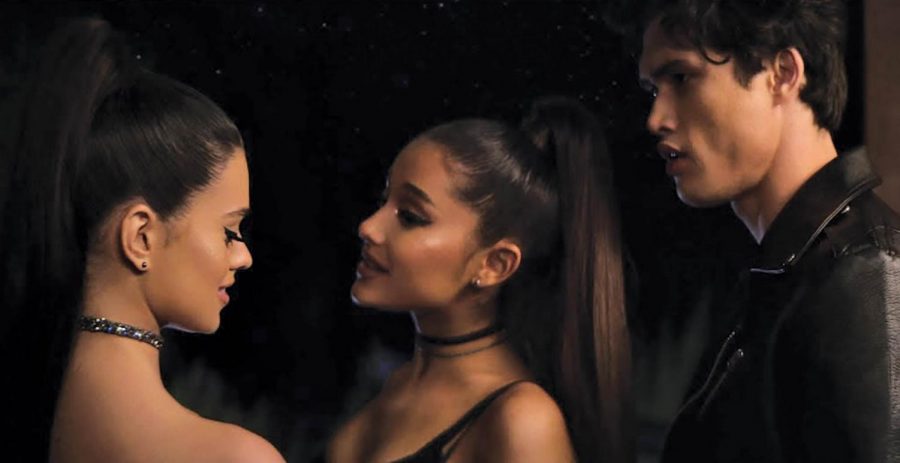Grande’s new music video raises queer baiting controversy
Grande’s music video premiered on Feb. 7.
Singer-songwriter Ariana Grande has been in hot water for what appears to be months now. The artist saw an insurgent amount of backlash due to her breakup with ex-fiancé Pete Davidson and her decision to release new music just six months after her fourth studio album “sweetener” was released.
At this point, the water has hit a boiling point. With speculations surrounding cultural appropriation and music plagiarism, it’s gotten more difficult to determine where Grande’s intentions lie.
As a young popstar with a large platform both on and offline, Grande understands the weight her presence holds. Her transparency and humor are often the most revealing aspects shared with her followers, especially on Twitter. This often leaves her vulnerable to direct criticism, something of which her fans did not hold back on after the music video for “Break Up with Your Girlfriend, I’m Bored” was released.
In a sit-down interview with radio interviewer Zach Sang, Grande shared that the driving force in her music was healing, self-love and above all having fun, which is “how ‘Break Up with Your Girlfriend, I’m Bored’” was born.
Though the song was received greatly on the charts, debuting at number one on the U.K. charts, and is generally perceived as fun and flirty by many critics, there are only so many memes that could be made to disguise the very real issues underlying the messages given in the visuals and the lyrics in themselves.
Opening up with a scene of Grande scoping out a couple in the middle of the party, it automatically sets a tone of attraction not only towards the leading male character, but also to his girlfriend who seems to be more of a focus throughout the video.
The end of the video is what caused more of the controversy. Grande and the couple are in a pool, where she approaches them and cuts the scene right before she leans in towards the girlfriend for a kiss.
Many felt that this visual concept could have been done in a more appropriate manner without playing into the very common practice of queerbaiting. That is, Ariana Grande could have manifested this idea of stealing your boyfriend with the likes of “Girlfriend” by Avril Lavigne and “Don’t Cha” by The Pussycat Dolls, instead of creating the imaginative dialogue that she’s attracted to women too to get the video traction.
Since the release of the video, Grande has not made any comments or clarifications regarding her intentions on the message. But she did share the behind-the-scenes look into the making of the concept featuring Hannah Lux Davis, the director of the video.
Davis expresses the girlfriend is intended to be an artistic play on Grande’s egotism, narcissism, and self-reflection in being in someone’s relationship and that the lyrics are directly correlated to the artist’s desire to become a part of a “love triangle.”
Historically, Grande has only portrayed herself as a straight women. Viewers aren’t sure to take this video as a way of her telling her audience she’s not or as her explicitly using women loving women as an aesthetic. The latter could be dangerous.
Countless artists who are a part of the LGBTQ+ community with much smaller platforms often do not get the same amount of radio play, streaming numbers or exposure simply for attempting to give their sexuality a proper name in the industry. It’s one thing to support the community, but another to make a name for yourself as an ally only to ultimately profit from it.







